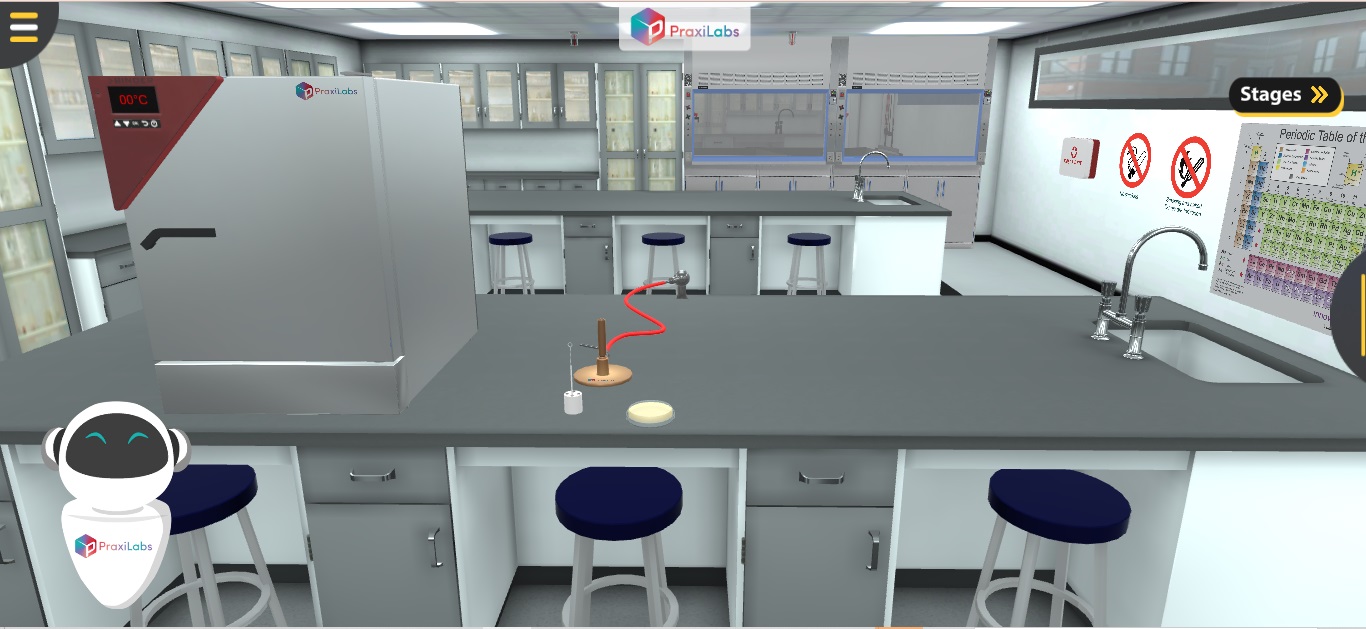Bacterial Plating-Out Technique - Streak plate Simulation
Biology | Molecular Biology | Biochemistry | Genetics | Microbiology






2.5M+
Active Users Worldwide
80%
Improved Learning Retention
60%
Reduction in Laboratory Costs
Identify the organism through streak plate simulation.
Streak plate Method
In the streak plate virtual lab, students will learn to:
In microbiology, streaking is a technique used to isolate a pure strain from a single species of microorganism, often bacteria.
The dilution or isolation by streaking method was first developed by Loeffler and Gaffky in Koch’s laboratory, which involves the dilution of bacteria by systematically streaking them over the exterior of the agar in a Petri dish to obtain isolated colonies which will then grow into the number of cells or isolated colonies.
Streaking is rapid and ideally a simple process of isolation dilution.
Understanding streak plating techniques in microbiology is fundamental for working with bacterial cultures and performing accurate identification.
The technique is done by diluting a comparatively large concentration of bacteria to a smaller concentration.
The decrease of bacteria should show that colonies are sufficiently spread apart to effect the separation of the different types of microbes.
In the streak plate simulation, streaking is done using a sterile tool, such as a cotton swab or commonly an inoculation loop.
Aseptic techniques are used to maintain microbiological cultures and to prevent contamination of the growth medium during the streak plate simulation.
The streak plate method simulation is a rapid qualitative isolation method.
It is essentially a dilution technique that involves spreading a loopful of culture over the surface of an agar plate.
The resulting diminution of the population size ensures that, following inoculation, individual cells will be sufficiently far apart on the surface of the agar medium to effect a separation of the different species present.
Advanced variations include the cross streak plate technique for testing antibiotic sensitivity or bacterial compatibility.
In the virtual streak plate simulation, the streaking process will dilute out the sample that was placed in the initial region of the agar surface.
Mastering the streak plate test is essential for obtaining pure bacterial cultures for further analysis and identification.




